Freehand sketching is used in the early stages of the design process.

Sketch: rough graphic representation of an idea or concept.
They are
- quick
- black and white
- few details
- created without rulers or other drawing instruments
- clear
- concise
- dark enough to be scanned and copied
- typically 2D format & views.

Sketches are used:
- to help think or visualize an idea
- during brainstorming sessions
- to record information in the field
- as a starting point
.
"I'm not an artist" ??
Sketching is a technical skill, acquired and learned through practice.
Use:
- basic shapes
- arrows
- stick figures
- doodles

Lines:
Sketches are made up of lines.
It's kind of like bowling:
- don't look at the tip of your pencil
- look where you want to go.

It's ok to have bumpy freehand lines


Shapes:
Draw a Circle:
Curves: connect the dots!
Sketch in Proportion

Isometric Sketching:
Estimating Dimensions:
Views: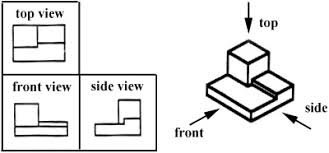
Worksheets:
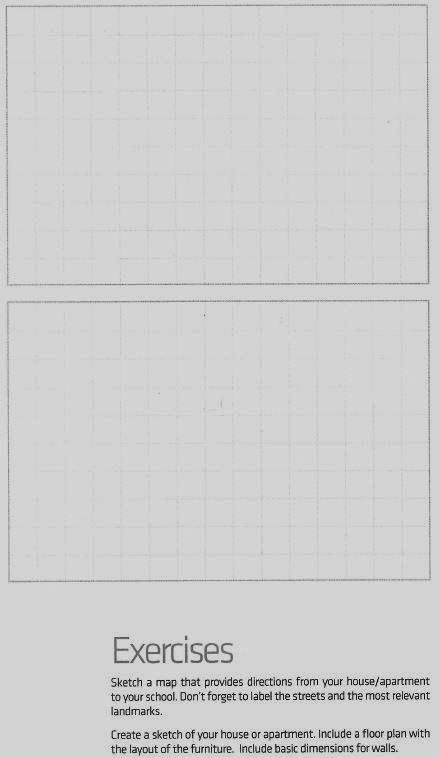
Example sketching worksheets:
- look where you want to go.

It's ok to have bumpy freehand lines


Shapes:
Draw a Circle:
Curves: connect the dots!

Isometric Sketching:
Estimating Dimensions:
Views:
Worksheets:

Example sketching worksheets:
.
.
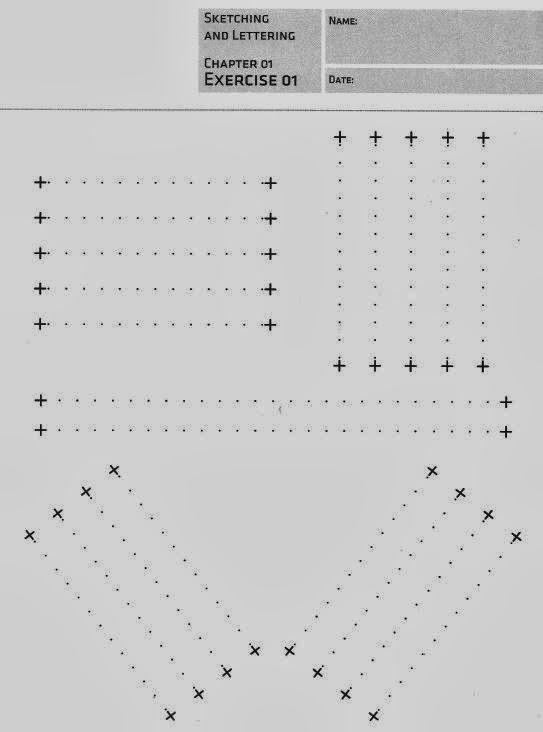
.
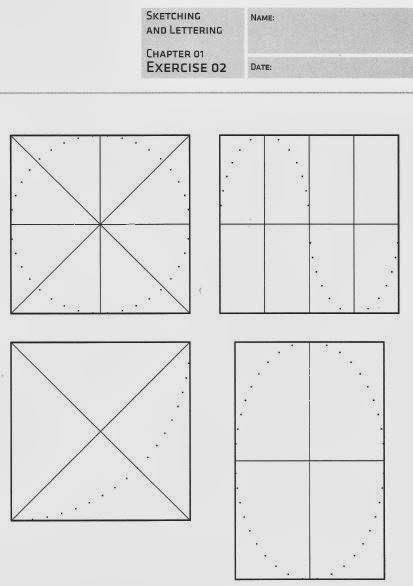
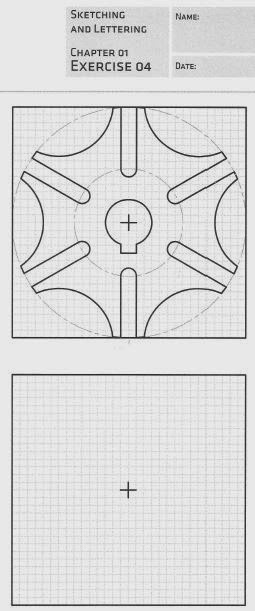
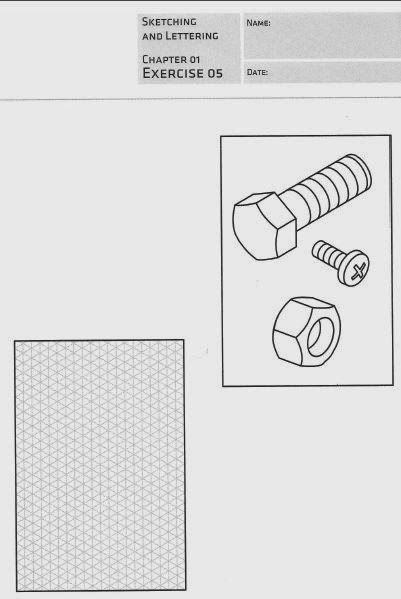
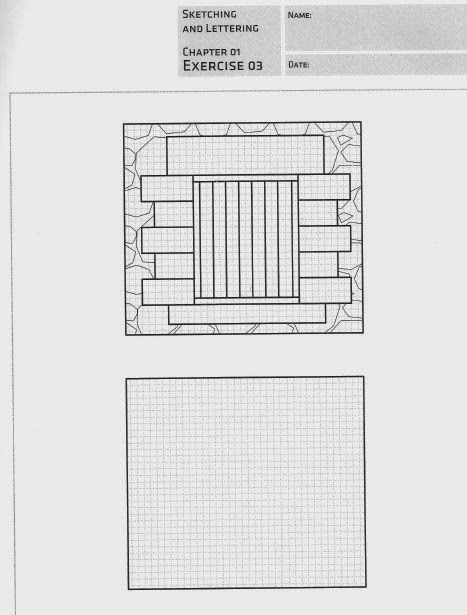
*******************************************
Sketching exercise:
Design and sketch a fireplace:
Sketching practice ideas,
Sketch watch gears:
Design and sketch a stadium:
Design / sketch a bicycle:


*************************************
Lettering
Sketches include textual information such as dimensions, assembly instructions, and manufacturing details.
Different lettering styles:
Single Stroke Gothic
Hand position
Lettering Worksheets:

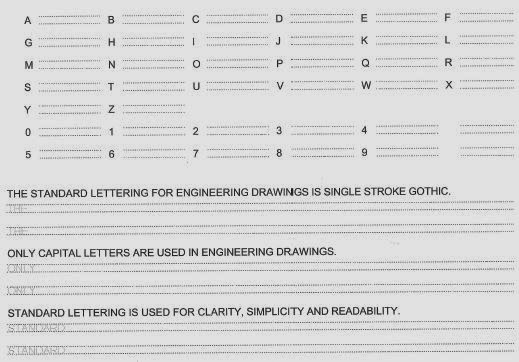
Sign and date your sketches just like a lab book!
**************************************************************
When sketching,
Include lettering on each page with:
Your name, date, class, title, and description of what your sketch is and parts list if applicable.
.

.




*******************************************
Sketching exercise:
Design and sketch a fireplace:
Sketching practice ideas,
Sketch watch gears:
Design and sketch a stadium:


*************************************
Lettering
Sketches include textual information such as dimensions, assembly instructions, and manufacturing details.
Different lettering styles:
Single Stroke Gothic
Hand position
Lettering Worksheets:


Sign and date your sketches just like a lab book!
**************************************************************
When sketching,
Include lettering on each page with:
Your name, date, class, title, and description of what your sketch is and parts list if applicable.
Example compass sketch
Example 3D initials
(Do this with your own initials)
Example project idea sketches
********* Just for fun, video:
Flatland & the 4th Dimension - Carl Sagan
https://www.youtube.com/watch?v=iiWKq57uAlk
The hardest part of drafting is turning something that is 3D into something that is 2D. The 2D image will always be distorted - like the continents on a flat map are distorted from the 3D reality. The following vid series takes you through the process of traveling between dimensions.
http://www.dimensions-math.org/Dim_regarder_E.htm
http://www.youtube.com/embed/6cpTEPT5i0A?list=PL3C690048E1531DC7
http://www.youtube.com/watch?v=6cpTEPT5i0A&list=PL3C690048E1531DC7
It’s a fun thought experiment in any event, and helps you think about 3D to 2D as well.
Flatland & the 4th Dimension - Carl Sagan
https://www.youtube.com/watch?v=iiWKq57uAlk
The hardest part of drafting is turning something that is 3D into something that is 2D. The 2D image will always be distorted - like the continents on a flat map are distorted from the 3D reality. The following vid series takes you through the process of traveling between dimensions.
http://www.dimensions-math.org/Dim_regarder_E.htm
http://www.youtube.com/embed/6cpTEPT5i0A?list=PL3C690048E1531DC7
http://www.youtube.com/watch?v=6cpTEPT5i0A&list=PL3C690048E1531DC7
Dimensions above and beyond xyzt ie x(left right) y(side to side) z (up down) t(time)? String theory, M-theory, brane’s, all the TOE’s (Theory of everything’s) rely on multidimensional euclidean spaces - AKA 4D +, tesseract kinds of stuff etc. etc.
In order to see in 4D… well… have you ever read Flatland? To understand going from 3D to 4D, first visualize what it means to go from 1D to 2D, from 2D to 3D, then use the same info to go 3D to 4D. Flatland is about life in 2D. In the book you are not above the 2D plane looking down (that requires 3D), you are inside the 2D plane itself – take a piece of paper, draw a 2D circle on it, then pick the paper up and look at it from the edge. From inside the paper the circle looks like a line. All shapes look like lines/points if you are a 2D being in a 2D world. In the book triangles have to vibrate to warn those who approach of it’s points (they can’t see the point, they can only see a line) etc. etc. The 2D beings cautiously feel their ways around the “lines” to feel the curve of a circle, and corners of squares/octagons etc. etc. Trapped inside the 2D plane, unable to see the shape from the top, you begin to understand the difficulties associated with communicating information of higher dimensional worlds to lower dimensioned ones. As a 3D being, we can easily see/understand 2D and 1D… seeing up into 4D takes a little doing though.
Flatland:
Flatland:
http://www.youtube.com/watch?v=UnURElCzGc0
The first hour of the dimensions movie concentrates on projecting 3D objects onto 2D surfaces (which is what we are doing in CAD). Globe to a wall map – how the continents on the flat map are distorted when you try and flatten a 3D object into 2D. It moves a little slow, but remember, the point is to train your eyes to recognize the object casting the shadow if all you can see is the distorted shadow on the flat ground. Once you train your eyes to turn 2D distorted shadows into 3D objects in your mind, you are one step away from turning 3D shadows into possible 4D objects. (4D objects don’t cast 2D shadows, their shadows are three-dimensional.) Just as a 2D square is a slice of a 3D cube. A 3D cube is a slice of a 4D tesseract. Just as the 2D creature in flatland could bump into a line, feel it’s curvature, then walk around it to discover a shape – and this shape was only a slice of the 3D world…. We 3D creatures can bump into a 3D shape, walk around it, and start to imagine a slice of the 4D world. A world that might actually exist, only we can only see it’s cross section because we are trapped in 3D.























































